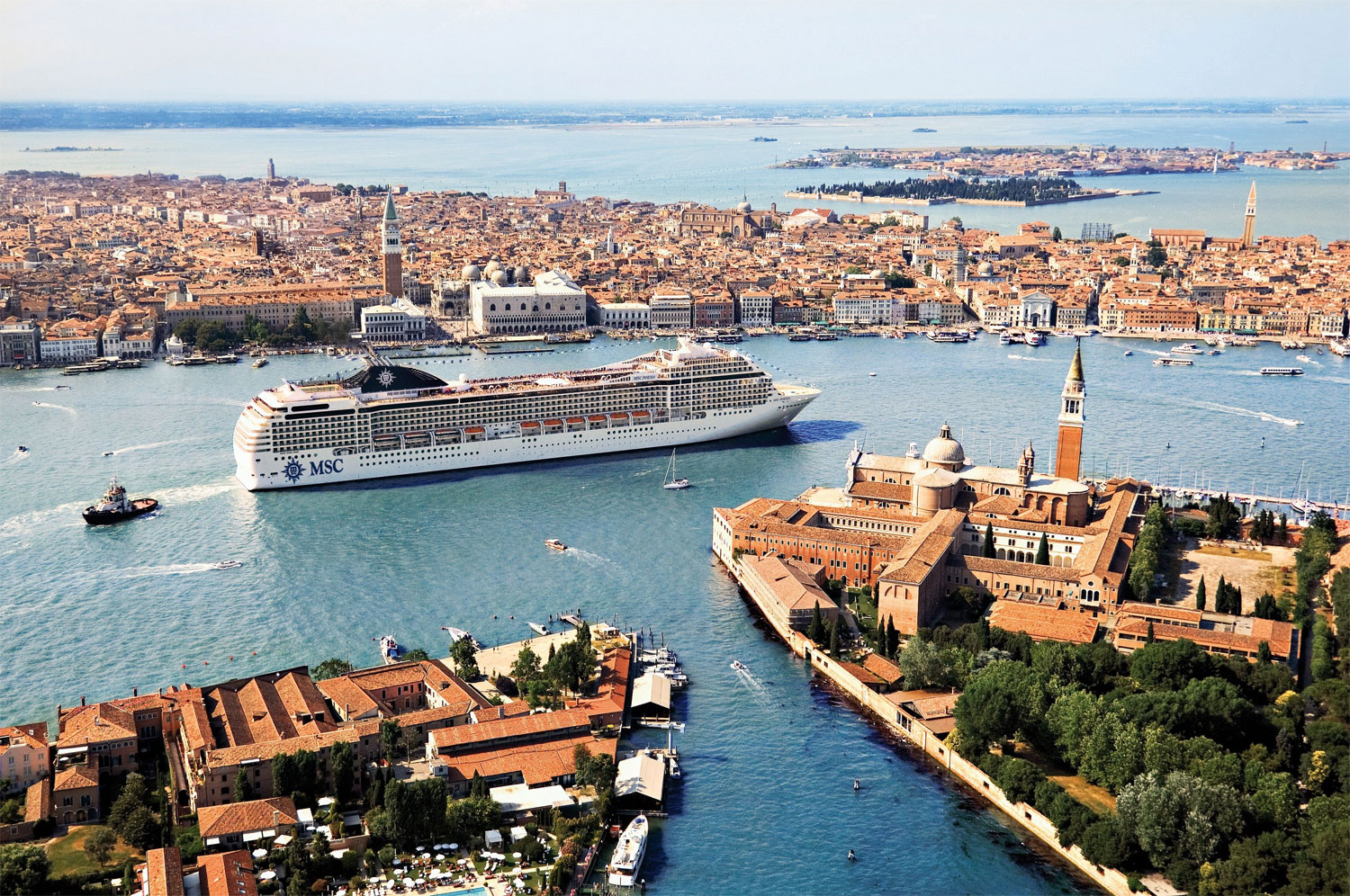The scenes that emerged online this week of the 2,679-passenger MSC Opera colliding into a dock and Uniworld’s 130-passenger River Countess, has sparked the debate, once again, about whether Venice’s waterways are just too busy.
The Venetian council, locals and even street graffiti artist Banksy, have rallied against the cruise industry’s presence in the canal city.
However, while there is indeed a question mark over the number of ships arriving in this beautiful city and how they are regulated, the Opera incident is really a shipping accident. And while it provides the reason for the debate, the accident is not the problem.
Every year, Venice attracts at least 20 million tourists. The city, filled with Renaissance and Gothic architecture, is one of Europe’s epicentres of culture, art, music and food. The entire city is a UNESCO listed heritage sight, and is one of the most highly sought after destinations in Europe to visit.
But out of that 20 million tourist figure, cruise passengers only represent five per cent – that’s 800,000 cruisers over the course of a year.
In 2014, cruise lines enacted a voluntary limit on the size of ships visiting Venice via the Guidecca Canal, which means that vessels of more than 96,000 tonnes currently do not call into the city.
And as a result, the Cruise Lines International Association said that the number of cruise visitors to Venice has declined since 2014, when the ship size limits were voluntarily implemented.
Venice’s council has proposed that cruise ship traffic be rerouted to the Vittorio Emanuele III Canal for several years. It’s a wider channel that is currently disused. It’s a move which has been supported by CLIA.
A statement from the organisation said, “CLIA cruise lines welcome the statements by the Mayor of Venice demanding an urgent solution that would allow cruise vessels to enter Venice cruise terminal via an alternative route to the Giudecca Canal.
“The member lines of CLIA have been actively engaged in discussion about using the Vittoria Emmanuele Canal as a solution for a considerable time, and have been cooperative in simulations and studies that resulted in the Comitatone recommendation.
“CLIA urges all parties in Venice to reach a conclusion to start the preparation work to dredge the Vittoria Emmanuele Canal to begin to reroute larger ships.”
The latest reports from Italian media suggest that the captain of the Opera is facing charges of “criminal damage with danger of causing a shipwreck”, and a number of others, including port officials will also be investigated.
While an investigation is currently underway, David Calderan, the head of the tugboat company involved in steering the ship towards the city, told Italian media that the problem was the MSC Opera’s engine.
“The MSC ship had an engine failure, which was immediately reported by the captain,” Mr Calderan said. “The engine was blocked but because of thrust on, the speed was increasing.
“The two tug boats that had been guiding the ship into the dock tried to slow it down, but one of the chains linking them to the giant snapped under the pressure.”
Both ships are currently being repaired.
In the aftermath, however, Venice needs to get its house in order. It needs to open the new waterway, issue clear guidelines and accept that the city needs to be a place for residents and visitors of all kinds.
It’s the job of government, not of the cruise industry.









It ain’t the governments fault if there’s a mechanical or operational issue.
Their job is to ensure things are as safe as they can be – and there’s nothing to indicate that is an issue to date.
The conclusion above is misguided.